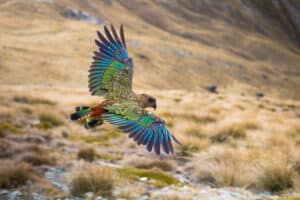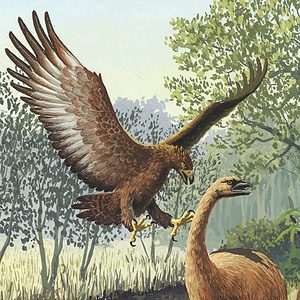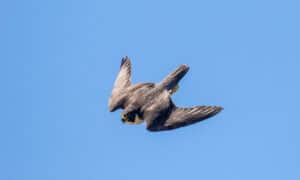There are many beautiful birds that start with the letter K. Common birds whose names start with the letter K include Kākāpō, kestrel, kea, kingfisher, kiwi, kookaburra, king quail, karoo lark, keel-billed toucan, king eider, Kentucky warbler, and king penguin. Some are commonly known, and others are quite rare, and even thought extinct until they were seen in the wild. The birds hail from all over the world, from Australia to South Africa to America. Here is a fun list of 25 birds starting with the letter K!
1. Kaempfer’s Woodpecker
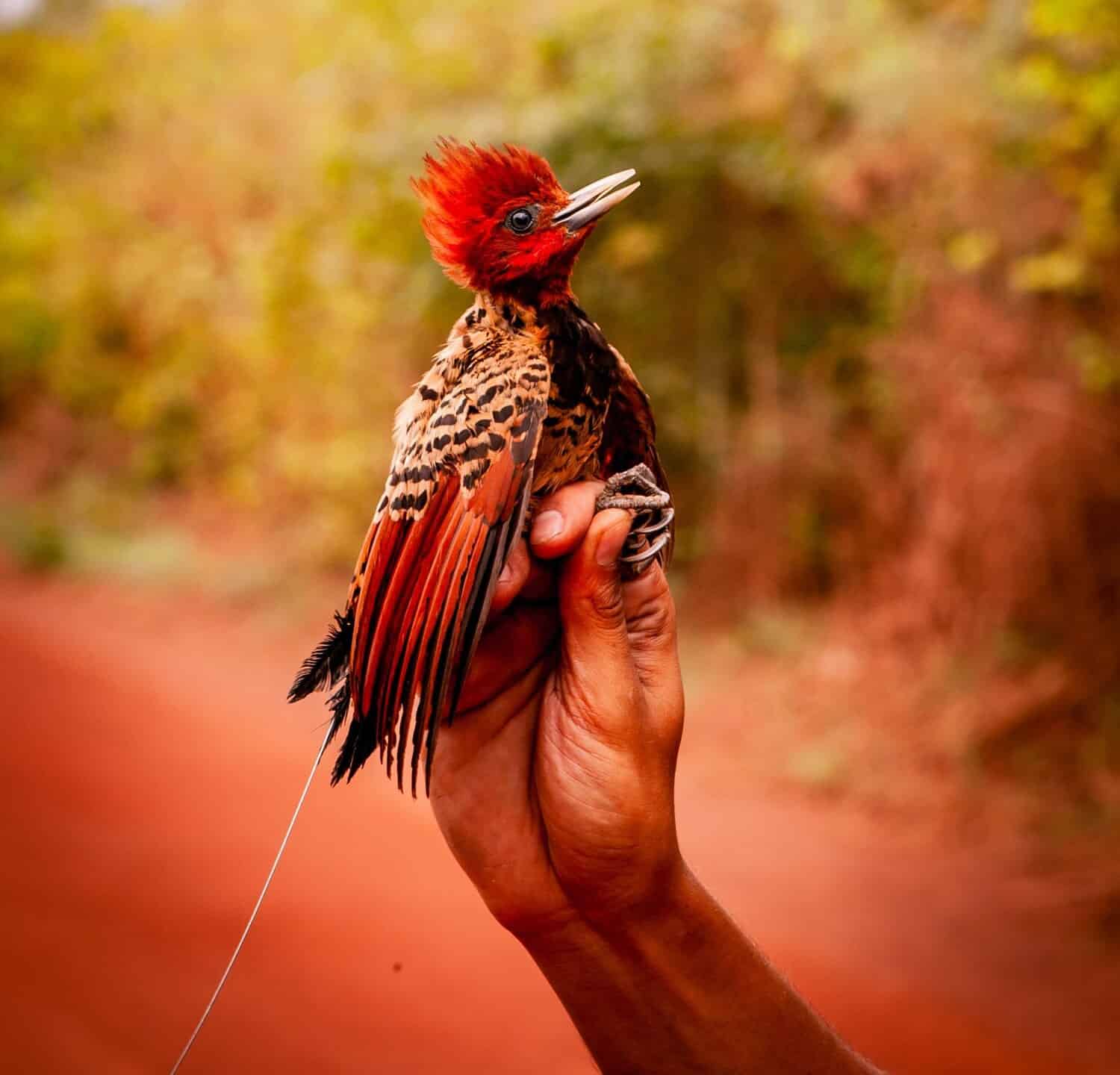
The vibrant Kaempfer’s
woodpecker
was thought to be extinct until rediscovered in 2006.
©RafaelBatista/Shutterstock.com
Kaempfer’s woodpecker is a colorful bird that hails from Brazil. Both sexes of the species show hues of yellows, reds, and browns in their feathers. Once considered a “lost bird,” the rediscovery of the woodpecker in October 2006 allowed ornithologists to focus on bringing it back from the edge of extinction.
2. Kaka
3. Kākāpō
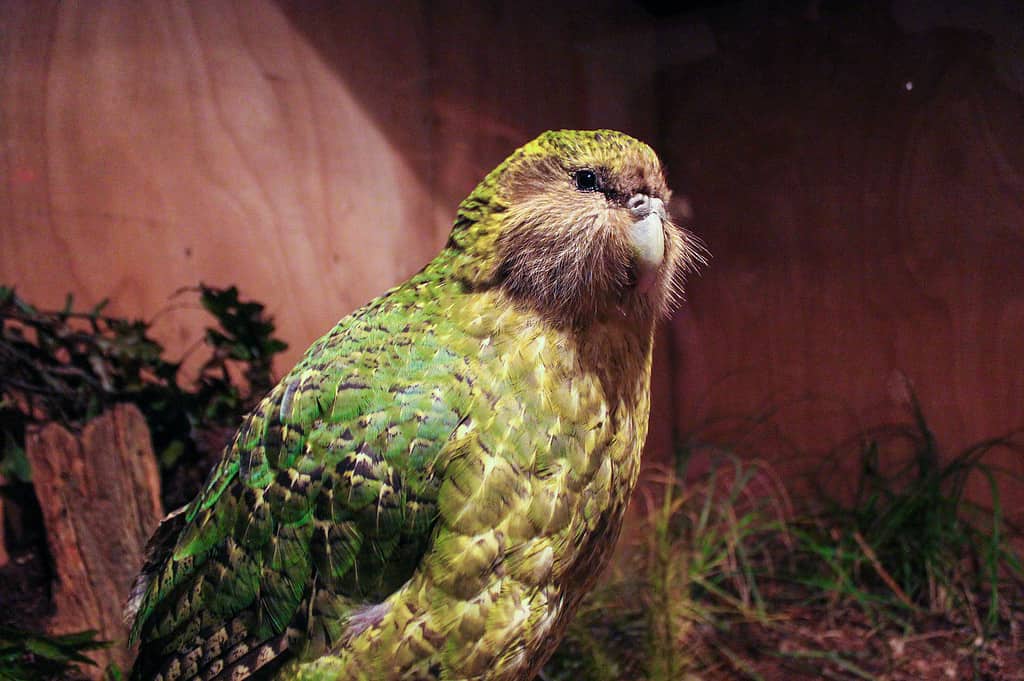
Kākāpō birds are the only nocturnal and flightless parrots in the world.
©Imogen Warren/Shutterstock.com
The large and rotund Kākāpō birds are native to New Zealand. They cannot fly because they have small wings relative to their size, and because they lack the keel on the breastbone where the muscle for flight on other birds is attached.
4. Kea
5. Kingfisher
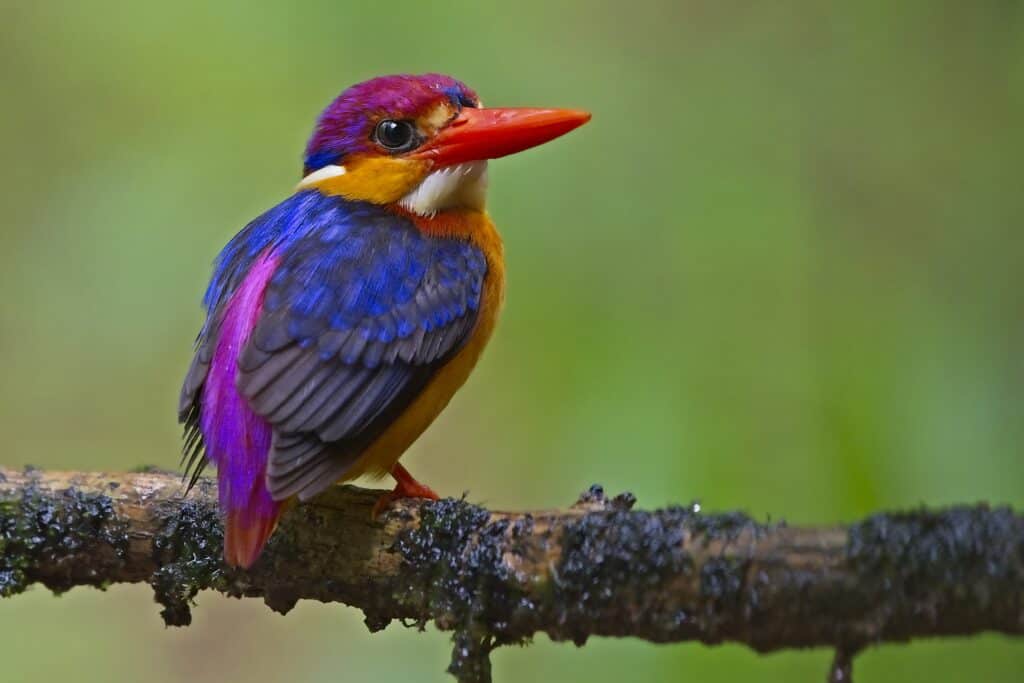
There are 116 species of the kingfisher.
©iStock.com/lensalot
The brightly colored kingfisher species can be found globally. However, the center of their global takeover is the Australasian realm. The beak of a kingfisher tells an observer if they are a male or female. Also, a fun fact is this sleek bird inspired the Japanese bullet trains.
6. Kiwi
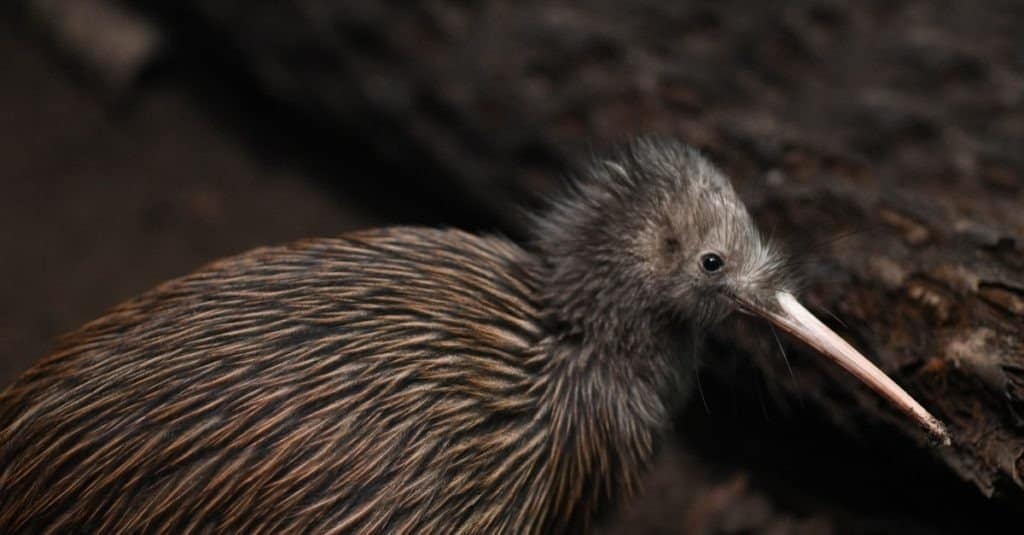
The Kiwi has a finely developed sense of smell, which is rare in birds
©Lakeview Images/Shutterstock.com
The Kiwi is a national symbol for New Zealand. It is a flightless bird which is one trait that makes it one of the most unique birds in the world. Being nocturnal, they rely on their smell and touch, and they are in danger of becoming extinct. The Kiwi has the lowest body temperature of any bird, and the female is one of the few birds with a functioning pair of ovaries. Most birds only have one ovary. Their feathers are very soft, resembling fur, and just like mammals, their bones are filled with marrow.
7. Kokako
8. Kestrel
9. Kelp Gull
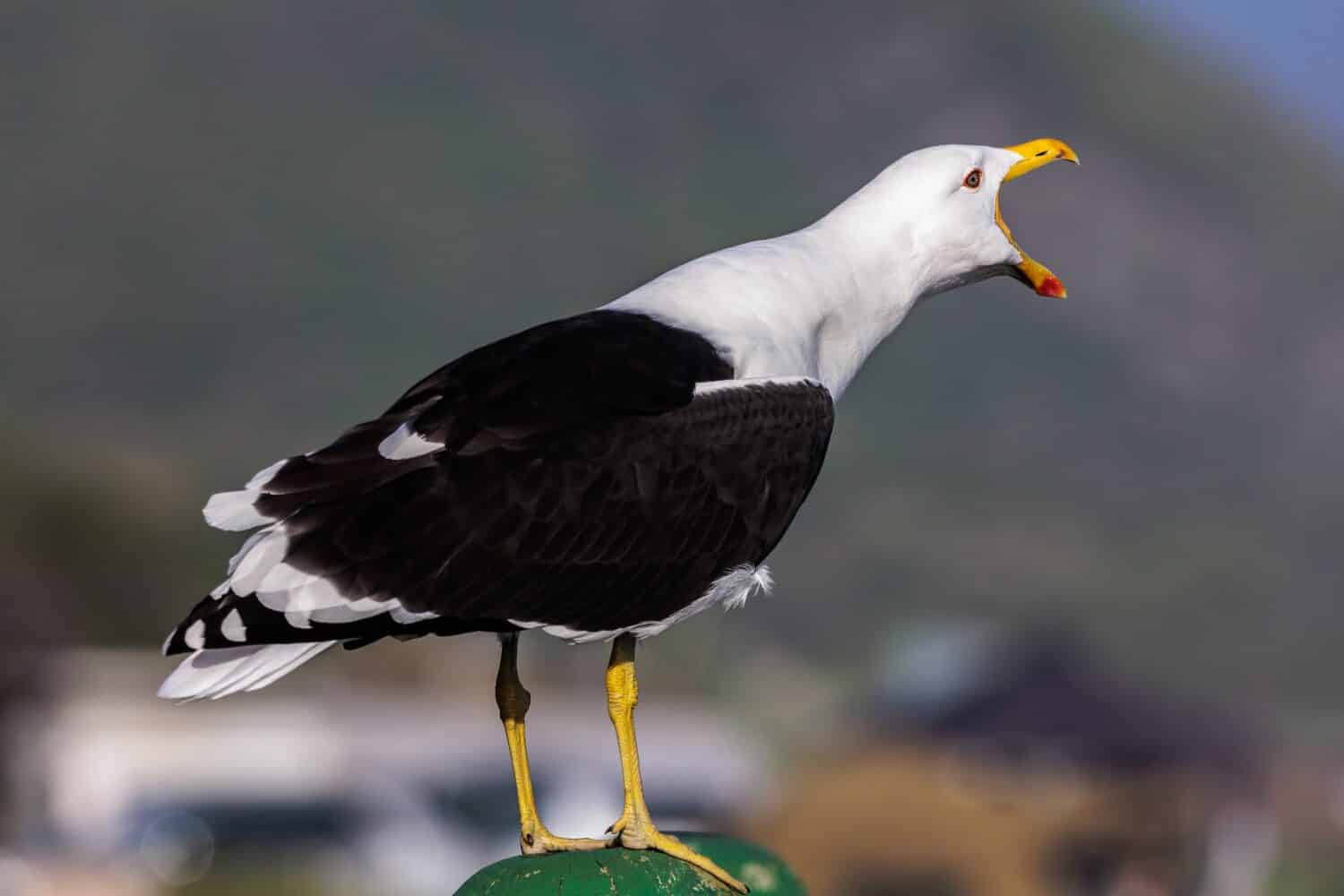
There are 116 species of the kingfisher.
©Jannie Peyper/Shutterstock.com
Kelp gulls are scavenger birds and are usually seen feasting in landfills or on discards from fishing boats. They are omnivores and have even been observed to parasite quite large animals like whales by nibbling on their skin. Also, they will blind seal pups with their beaks to give them an easier way to catch a large dinner. Kelp gulls are most widespread around the equator and are usually found on sheltered harbors, bays, inlets, estuaries, beaches, and rocky shores.
10. Kookaburra
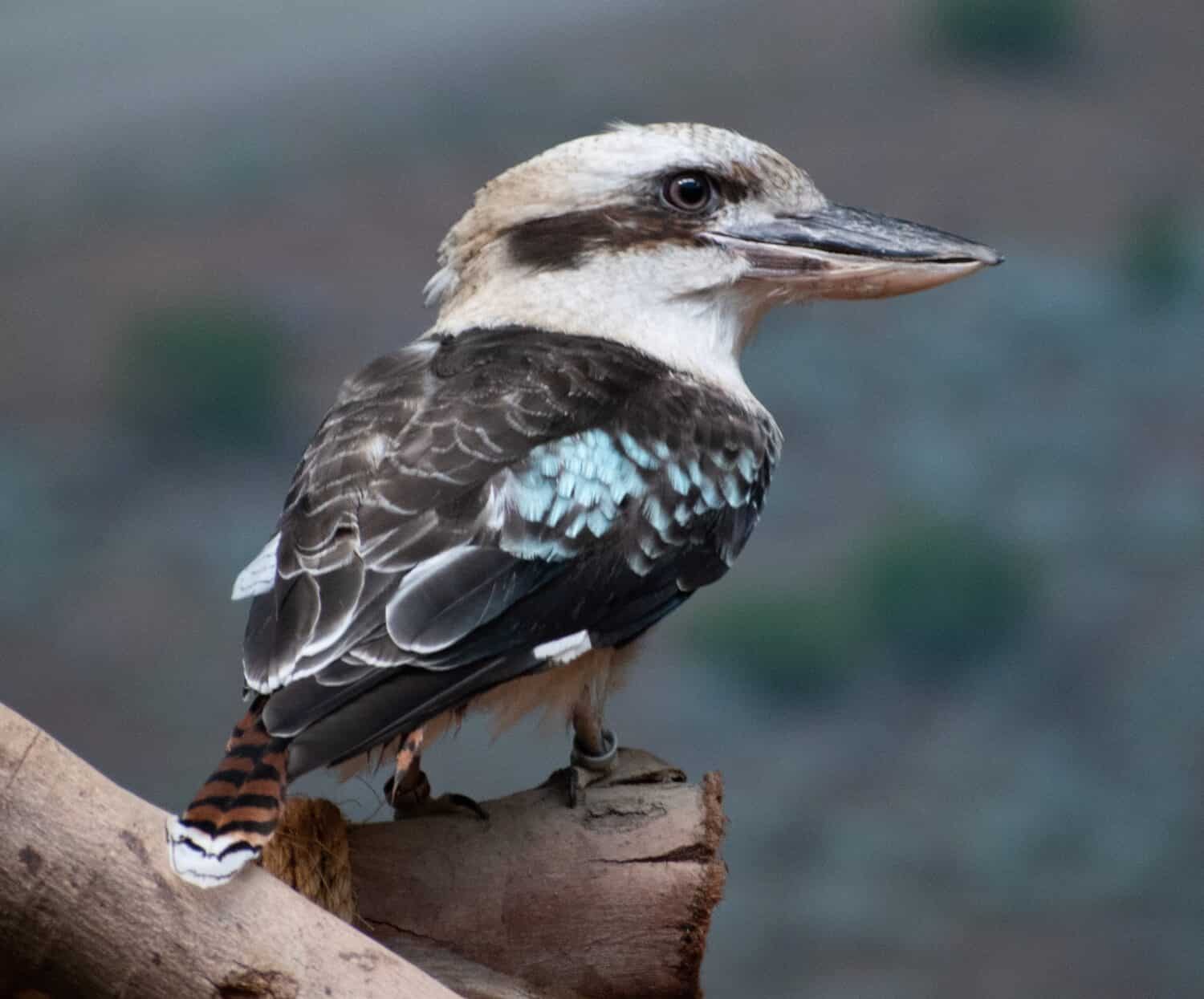
Laughing kookaburras are native to eastern mainland Australia.
©Lokesh Prem Budhrani/Shutterstock.com
Kookaburras belong to the Kingfisher family. They are known for their “laughing” calls, getting the nickname “Laughing Jackass” and “Giant Kingfisher.” They usually call at dawn or dusk, making their laugh the “bushman’s clock.” Kookaburras are carnivorous, and unlike other kingfishers, they rarely eat fish. Instead, they feast on mice, snakes, small reptiles, and even the young of other birds.
11. Killdeer
12. Keel-Billed Toucan
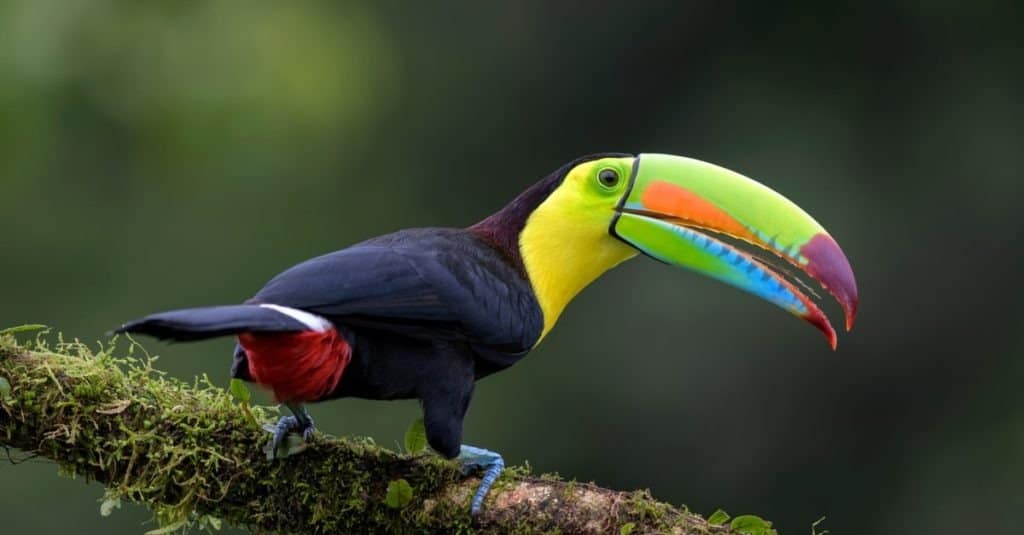
They are also called the “rainbow” toucan due to their colorful bills.
©David Havel/Shutterstock.com
Keel-billed toucans are tropical birds that thrive in humid climates. They hail from Central and South America and prefer to hop amongst the dense leaves of the country’s canopy because they aren’t excellent fliers. Even though they don’t fly well or often, they do live up very high, making them difficult to spot for predators. Their call is often likened to that of a frog and can is very loud. Their bills are often the cause of their nicknames, earning them the name “the flying banana” due to the curve and size of their bills.
13. Kashmir Flycatcher
14. King Quail
15. Kentucky Warbler
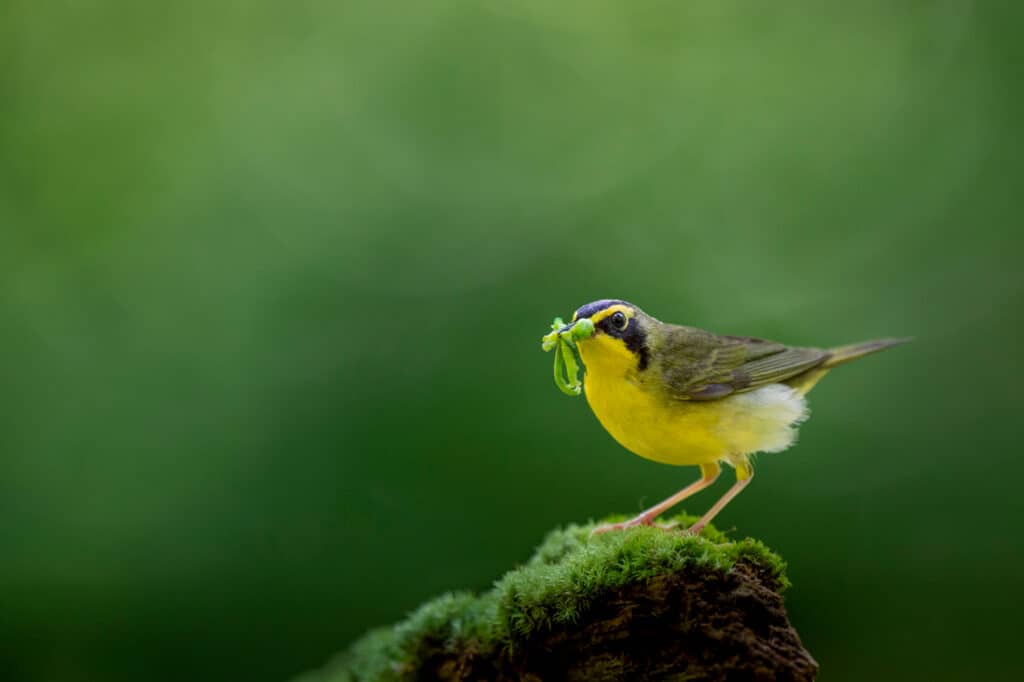
A male Kentucky warbler only sings the same song throughout his life.
©Ray Hennessy/Shutterstock.com
The Kentucky warbler migrates to the central and Eastern United States in the summer and spends the winter and fall in different regions of the Caribbean. They are a smaller species of the New World Warbler, often described as sluggish and heavy with a short tail. The Kentucky warbler sings in the trees though it does prefer to stay closer to or near the ground.
16. Karamoja Apalis
17. King Penguin
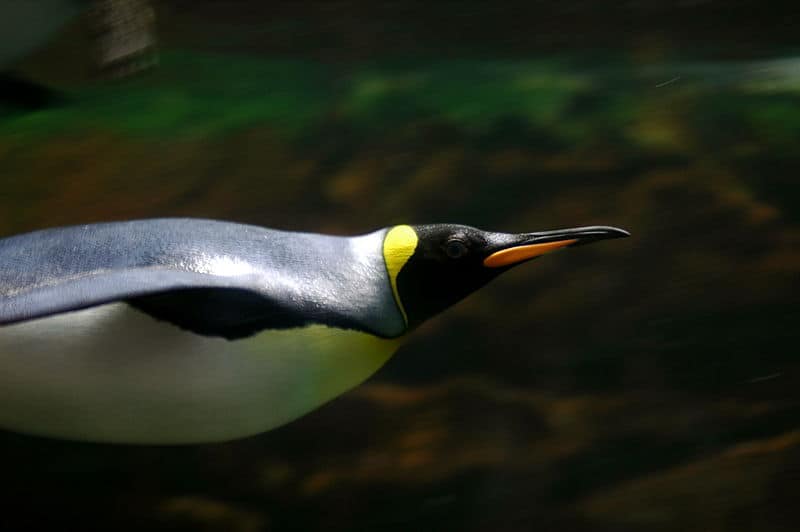
The
king penguin
is large for its species, with only the emperor penguin being larger.
©Jeff Kubina from Columbia, Maryland, CC BY-SA 2.0, via Wikimedia Commons – License
King penguins are expert divers and can dive to great depths, reaching 300 meters. They can also stay underwater for almost 10 minutes, traveling up to 1,200 miles. They hunt lanternfish, krill, and crustaceans. King penguin colonies are quite large with some being up to 200,000 birds. However, don’t fret, they don’t lose track of their family because family members can recognize each other by their unique vocalizations. King Penguins are also royal. King Harald V of Norway crowned one a knight at the Edinburg Zoo in 2008. His name became Sir Nils Olav.
18. Kagu
19. Karoo Lark
20. Knob-Billed Duck
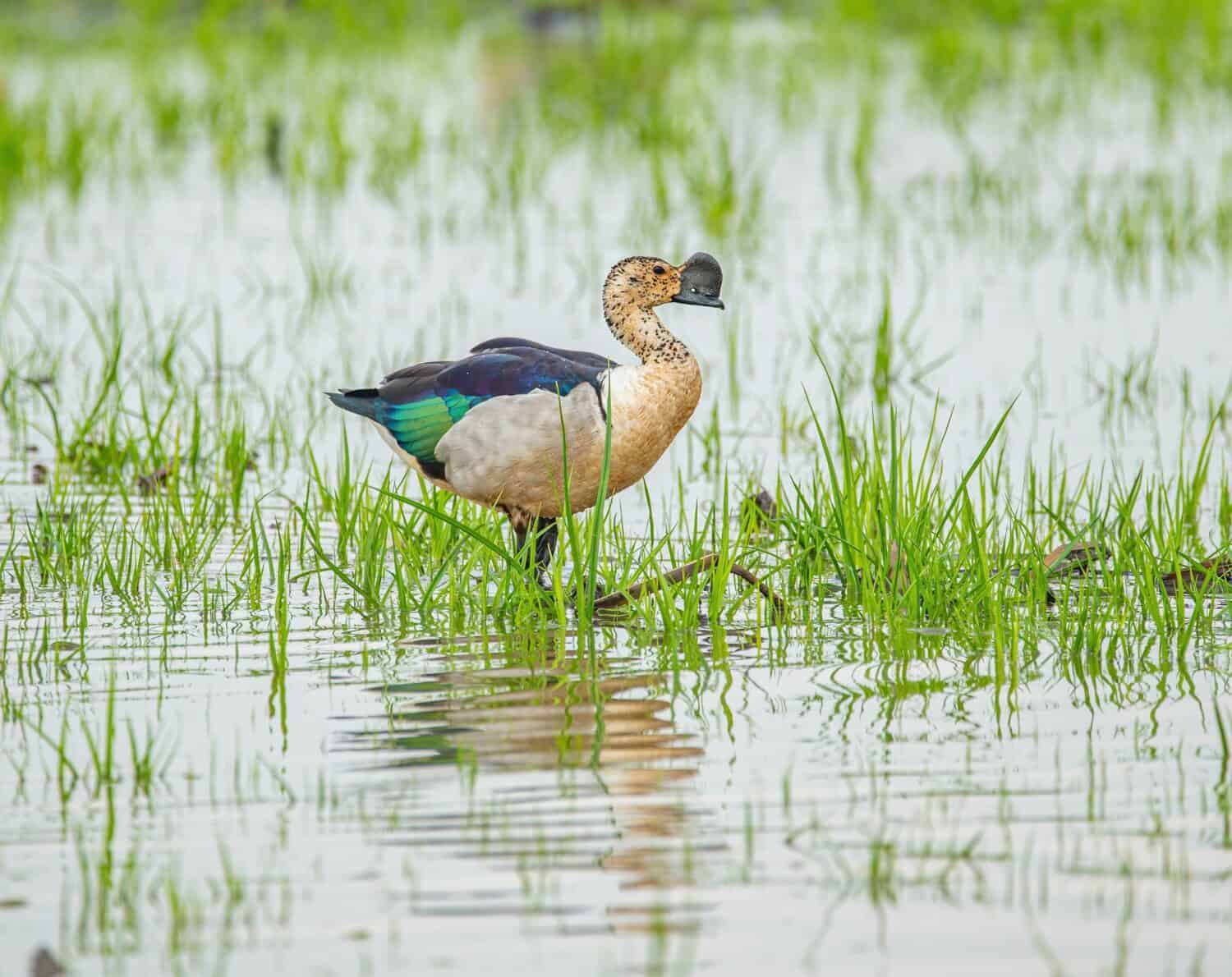
The knob-billed duck is one of the largest species of duck.
©luck luckyfarm/Shutterstock.com
The knob-billed duck, also known as the African comb duck, lives in tropical and subtropical climates. The species inhabit the wetlands and waterways of Sub-Saharan Africa and the island of Madagascar. They also hail from South Asia and mainland Indochina. They are named for the large knobs on their bills and are usually silent creatures. Though they often perch in trees, their grazing on seeds has become a problem for rice farmers.
21. Kerguelen Tern
22. King Eider
23. Kentish Plover
24. King Rail
25. Kawall’s Amazon
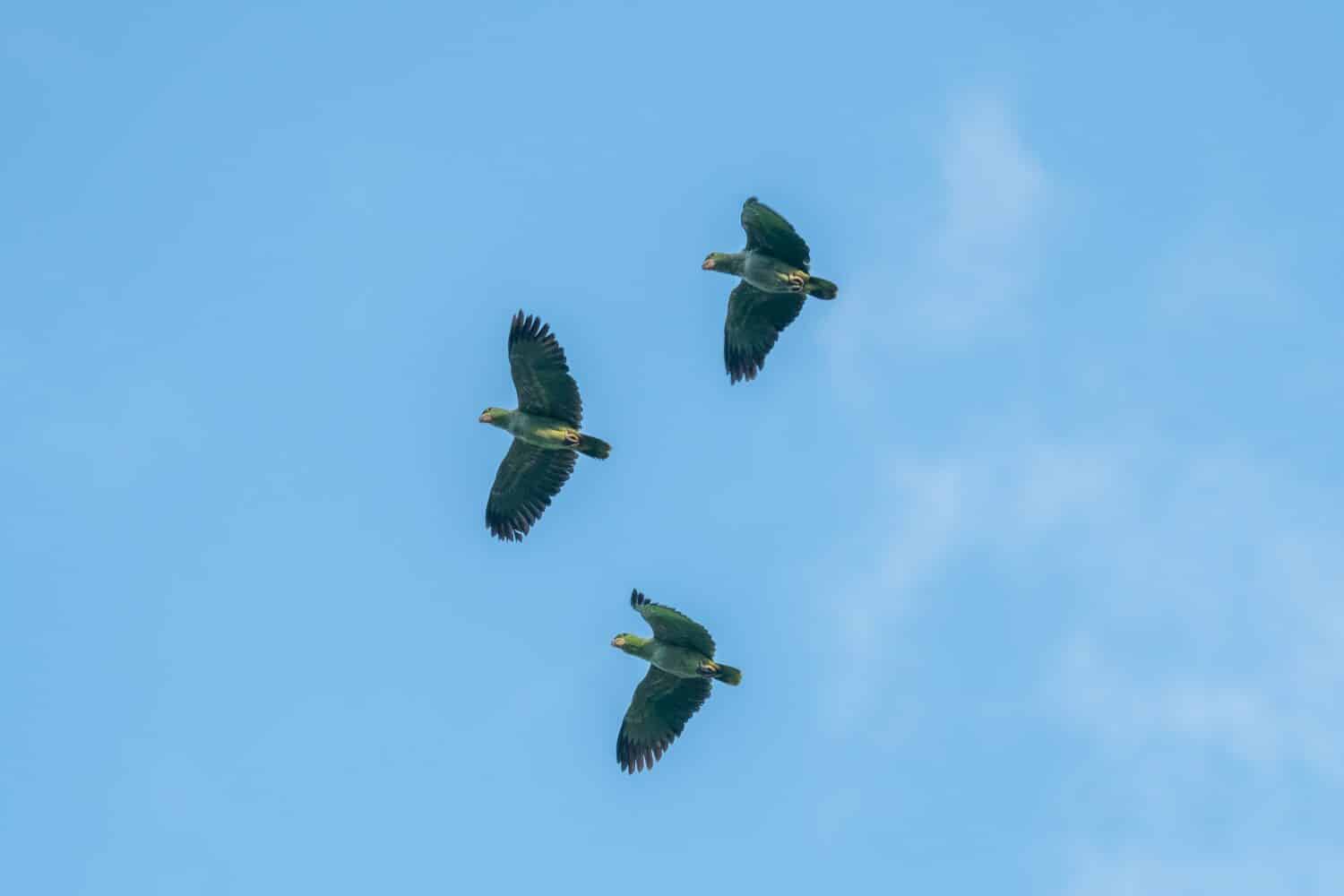
Populations of Kawall’s Amazon parrots are extinct and others are very threatened.
©Vaclav Sebek/Shutterstock.com
Kawall’s Amazon parrots live in the south-central Amazon. They were thought to be extinct after not being seen for 70 years. However, they were rediscovered in the 1980s. The species live in lowland rainforests and even prefer permanently flooded areas though they search out dryer areas for nesting.
The Largest Bird That Starts with K: Kori Bustard
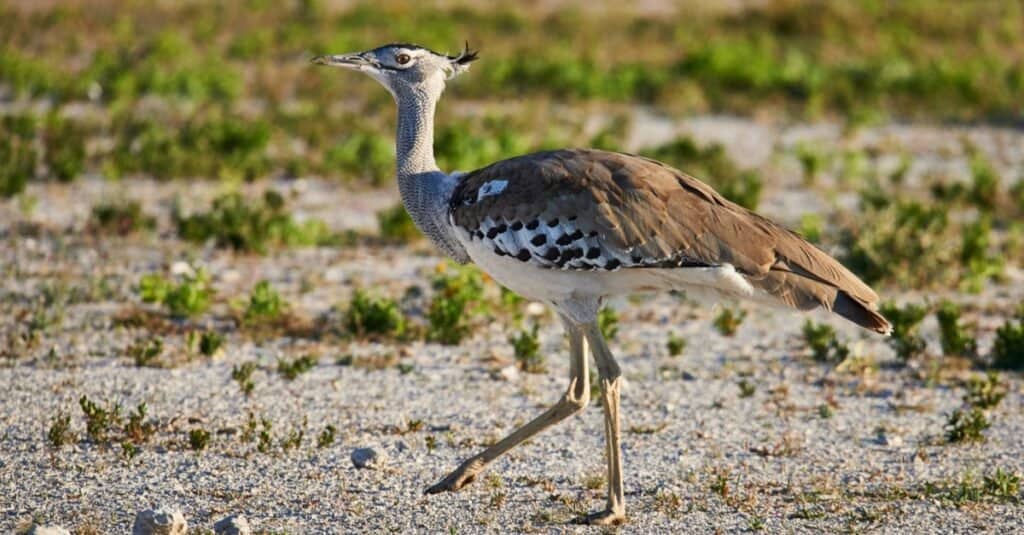
The
kori bustardis one of the world’s heaviest flying birds, however, it is reluctant to fly unless in danger.
©ArCaLu/Shutterstock.com
The kori bustards are the world’s heaviest birds of flight. The species is native to Africa and is part of the Bustard family and is the national bird of Botswana. Though the heavy bird does fly, it spends around 70% of its time on the ground. Males weigh an average of 24 lbs. and have a wingspan of 90.5-108 inches. Females are visibly thinner than males and have a slimmer neck. Kori bustards are opportunistic omnivores, meaning their diet has both animal and plant matter according to opportunity.
The Fastest Bird That Starts With K: Kestrel
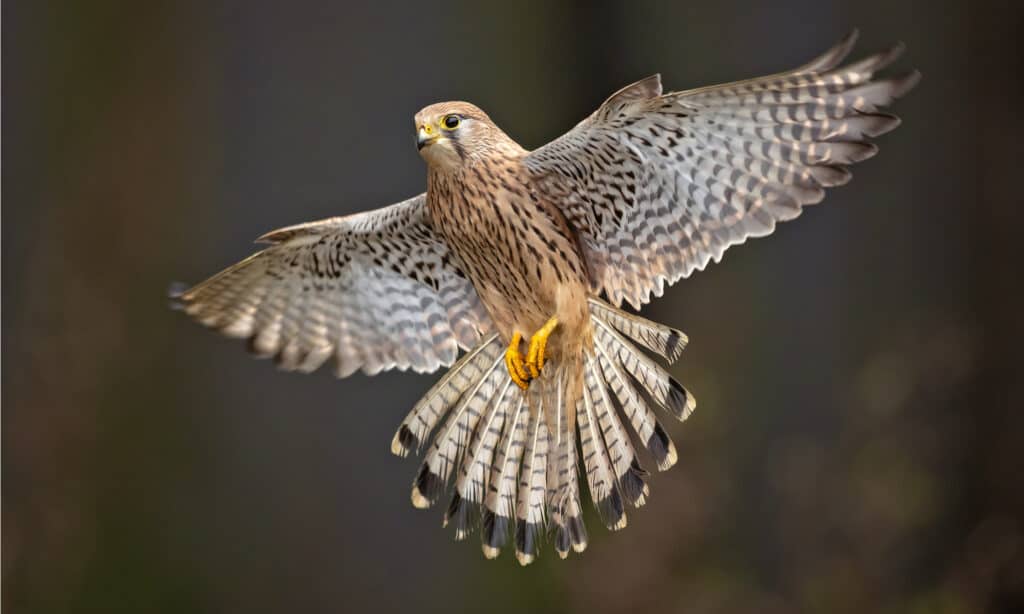
DNA analysis has shown kestrels to be closely genetically related to American falcons like the peregrine.
©Milan Zygmunt/Shutterstock.com
Kestrels are birds of prey that are part of the genus Falco. American kestrels can fly at speeds up to 39 mph. Peregrine falcons, a relative to the kestrel, can fly horizontally at 55 mph. However, their dives have been clocked at over 200 mph! A group of kestrels is referred to as a Soar, and they are considered the smallest raptor in America. American kestrels are only one of three raptor species in North America. The American kestrel is also a common bird for those just starting in falconry.
| Common Name | Scientific Names | |
|---|---|---|
| 1 | Kaempfer’s Woodpecker | Celeus obrieni |
| 2 | Kaka | Nestor meridionalis |
| 3 | Kākāpō | Strigops habroptilus |
| 4 | Kea | Nestor notabilis |
| 5 | Kingfisher | Alcedinidae |
| 6 | Kiwi | Apteryx |
| 7 | Kokako | Callaeas |
| 8 | Kestrel | Falco tinnunculus |
| 9 | Kelp Gull | Larus dominicanus |
| 10 | Kookaburra | Dacelo |
| 11 | Killdeer | Charadrius vociferus |
| 12 | Keel-billed Toucan | Ramphastos sulfuratus |
| 13 | Kashmir Flycatcher | Ficedula subrubra |
| 14 | King Quail | Excalfactoria chinensis |
| 15 | Kentucky Warbler | Geothlypis formosa |
| 16 | Karamoja Apalis | Apalis karamojae |
| 17 | King Penguin | Aptenodytes patagonicus |
| 18 | Kagu | Rhynochetos jubatus |
| 19 | Karoo Lark | Calendulauda albescens |
| 20 | Knob-billed Duck | Sarkidiornis melanotos |
| 21 | Kerguelen Tern | Sterna virgata |
| 22 | King Eider | Somateria spectabilis |
| 23 | Kentish Plover | Charadrius alexandrinus |
| 24 | King Rail | Rallus elegans |
| 25 | Kawall’s Amazon | Amazona kawalli |
The photo featured at the top of this post is © iStock.com/lensalot
Thank you for reading! Have some feedback for us? Contact the AZ Animals editorial team.



